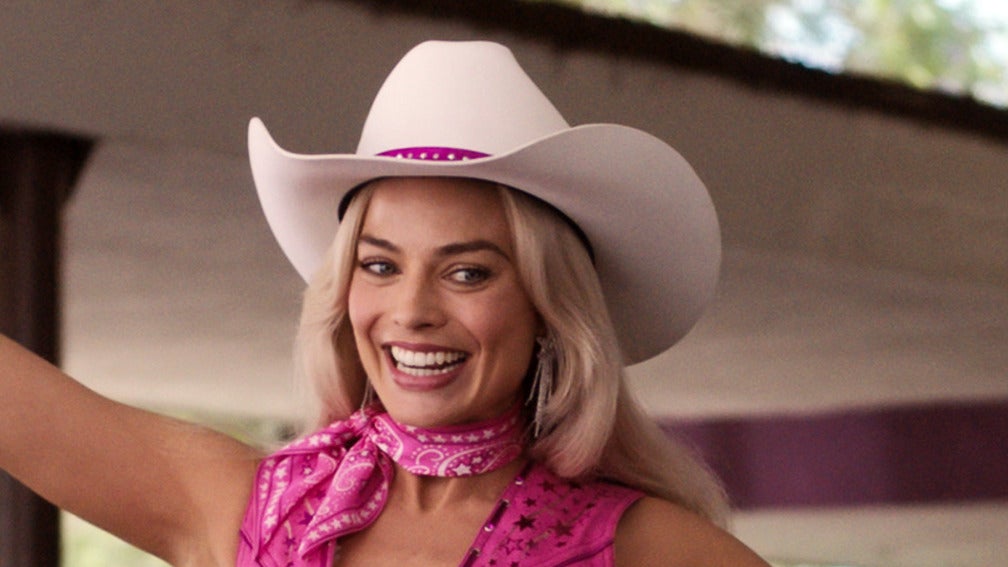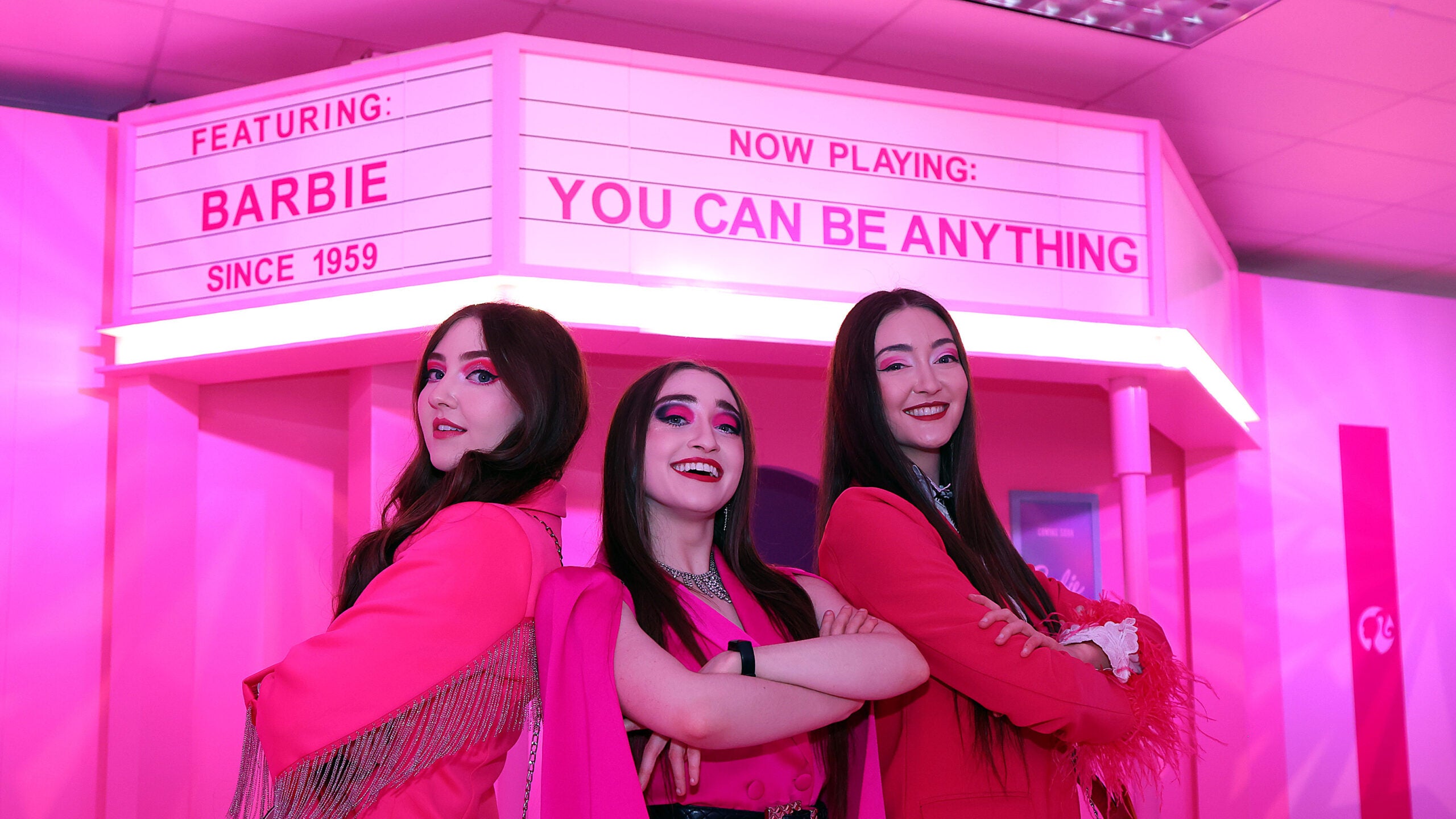When it came to some of the most urgent and enduring pop culture of 2023, the cowboy was center stage. As far as I could see, listen and experience, that most iconic of American characters was being remixed and reframed, often by a new and defiantly inclusive generation.
There were the mirrorball cowboy hats of the Renaissance tour, the pastel prairie looks of the Eras concertgoers, and that unforgettable magenta getup Margot Robbie donned in Barbie. Yellowstone, a modern Western starring Kevin Costner, was one of the most-watched shows on television, and its new spin-offs 1923 and Lawmen: Bass Reeves lassoed along even more audiences. In New York City, where I live, it seemed like half of all twentysomethings spent the summer in cowboy boots, despite the record-breaking heat. Recently I took some time on It’s Been a Minute to make sense of the pastoral themes that drove the year in culture.
One could argue that even before this zeigeist-forging year, however, the appeal of the cowboy as a wistful, malleable symbol of Americanhood has never left us. But something about this year’s cowboy kick felt deeper than aesthetics; deeper than a call back to nature beyond our digital lives. 2023 represented a collective and proud reclamation of the cowboy for those who have traditionally felt threatened or excluded by the archetype of the white, patriarchal, ruggedly individualistic gunslinger.
News with a little more humanity
WPR’s “Wisconsin Today” newsletter keeps you connected to the state you love without feeling overwhelmed. No paywall. No agenda. No corporate filter.
In the new exhibition, Cowboy, at the Museum of Contemporary Art in Denver,a collection of works curated by Nora Burnett Abrams explores and deconstructs the mythology of that archetype. With Denver as its backdrop, a multiracial and gender-spanning mix of artists reframe the cowboy as a uniquely American mingling of traditions that have nothing to do with the Marlboro Man.
We saw this idea in its most mainstream and live incarnation at the Renaissance tour. Near the show’s end, a glittering Beyoncé climbed atop the twinkling disco steed that has come to symbolize this era, dubbed “Reneigh” by fans. Suspended by a complex pulley system and showered in sheets of raining confetti, they floated out above a shrieking audience decked out in their space cowboy best.
For all the futuristic and android references in the Renaissance stage design, I found it fitting that Beyoncé chose to close her show with an equine moment. Reneigh isn’t just a reference to that famous photo of Bianca Jagger at Studio 54, she’s also a nod to Beyoncé’s Texan roots. “I grew up going to the Houston Rodeo every year,” Beyoncé told Harper’s Bazaar in 2021. “It was this amazing diverse and multicultural experience where there was something for every member of the family, including great performances, Houston-style fried Snickers, and fried turkey legs.”
As curator Abrams told me during our conversation for It’s Been a Minute, the word “cowboy” has its origins with the enslaved and indentured Black men who cared for American cattle, with “boy” a belittling term aimed at Black men of all ages. Although the culturally imagined cowboy is often white, in reality, Abrams says, in the mid-1800s, between a third and a quarter of all cowboys were either Black or Mexican.
By centering herself as an intergalactic disco cowboy, Beyoncé, a Black Texan woman, is both imagining a radical Black future and recalling the truth of the past. The image of the silvery-spangled pop empress evokes the idea of the cowboy as adventurer, but instead of championing westward expansion, she begs us to extend our capacity for pleasure under the pulsating thump of her musical command.
The music scenes that inspired Beyoncé’s Renaissance are home to queer communities that have been responsible for some of the most inventive and memorable interpretations of the cowboy this year. Director Pedro Almodóvar premiered his short film Strange Way of Life at the Cannes Film Festival in May, a Western romance starring Ethan Hawke and Pedro Pascal as newly rekindled paramours on the open range.
Almodóvar once declined the offer to direct Brokeback Mountain but found this an ideal moment to queer the gay cowboy canon in his distinct and lush style. Critics embraced this reinvigoration through the film’s overt references to Douglas Sirk and Sergio Leone, but its brief runtime and limited release somewhat dampened its reception. Fortunately the internet’s thirst for Pascal, and a desire to re-examine the cowboy from a new vantage point in queer cinema, secured the film a prominent spot in the discourse.
Another festival favorite this year was National Anthem, photographer Luke Gilford’s portrait of the queer rodeo scene. Gilford has long meditated on cowboy figures in his portraiture, but the premiere of his film punctuates our current moment.
Queer notions of the cowboy breathe new life into what is often a staid beacon of traditional masculinity. As New York Times Magazine writer and culture critic J Wortham explained to me, in this context, the “boy” in “cowboy” is a gender-neutral suggestion. They also pointed out that the cowboy’s accouterments are rife with sexual possibility. A lasso doesn’t have to be just a lasso, and chaps are sometimes best worn alone. Perhaps the cowboy is not a terrifying interloper, but your sturdy protector, like Stormé DeLarverie, the pistol-packing guardian of West Village gay and lesbian bars for nearly four decades – a black cowboy hat was often part of her signature look.
In Denver’s current Cowboy exhibition, one artist wrestling with the legacy and future of this image is multidisciplinary artist and composer Nathan Young, a member of the Delaware Tribe of Indians, and descendant of the Pawnee Nation and Kiowa Tribe. Young’s installation is Activation/Transformation, a collection of photographs, boots, hats, and other personal items collected from different generations of his family, some of whom were involved in Native American rodeo culture.
Abrams pointed out how Young’s work exposes the hypocrisy and inaccuracy of the racist “cowboys vs. Indians” trope. “[Activation/Transformation] upends that silly binary by showing through actual materials how ‘cowboy’ [Young’s] family and his community has always been,” said Abrams. How can the stereotypical cowboy be a calling card of whiteness if so much of its material culture is based in and entwined with the Native American traditions it wishes to annihilate?” It’s this worthy question that surrounds Young’s installation, and also certainly haunts another of one the year’s biggest pop culture moments, Martin Scorsese’s 1920s saga set on the Osage nation, Killers of the Flower Moon.
This year proved that despite the enduring power of pop culture icons like John Wayne and Buffalo Bill, the symbol of the cowboy – and the stallions, chaps, and lassos that go with it – isn’t owned by colonial expansion or mainstream Hollywood narratives. Over the centuries the cowboy has become an immovable entry in our public domain, free for the most alienated to deconstruct, confront and reclaim as America forges a new path for its future. In trying to put words to the project of “claim[ing] Americanness” while also reckoning with the violence traditionally symbolized by the cowboy’s presence, as critic J Wortham says, “maybe there are other alternate ways of being, and we have to try to embrace them in order to bring them into today.”
9(MDAyMjQ1NTA4MDEyMjU5MTk3OTdlZmMzMQ004))
© Copyright 2025 by NPR. To see more, visit https://www.npr.org.9(MDAyMjQ1NTA4MDEyMjU5MTk3OTdlZmMzMQ004))



